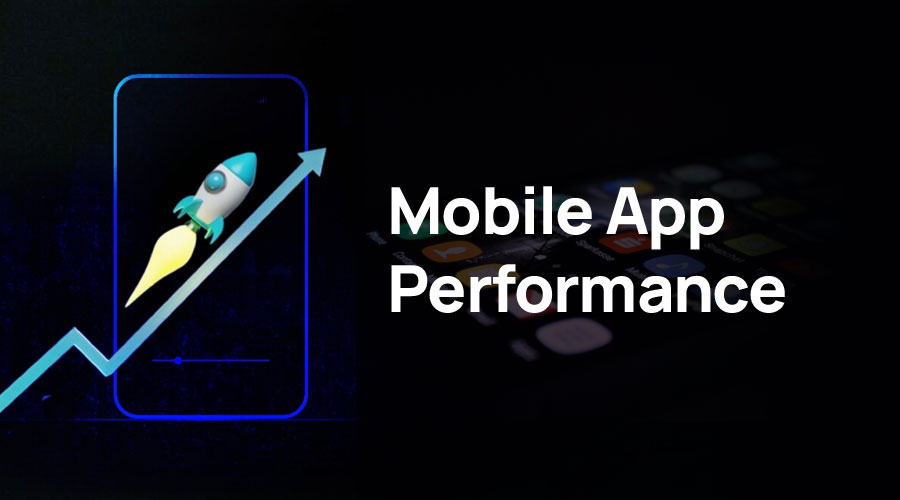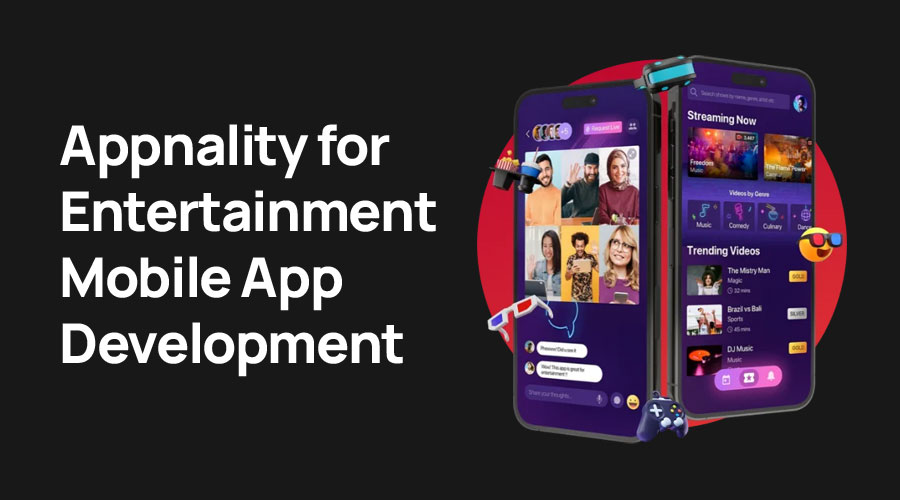Optimizing App’s Speed: Boosting Your Mobile App Performance

Mobile app users are impatient with slow performance in today’s swift digital environment. Speed is the most important factor in retaining and attracting users, whether in games, productivity tools, or social networking sites.
Therefore, optimizing app speed is paramount for developers to achieve these goals. From code optimization to reduced load times, each of these tasks must be addressed for a perfect user experience throughout the app development process.
We will thoroughly examine how to enhance mobile app performance in this blog. We will address the challenges associated with increasing an application’s speed for both seasoned developers and beginners in the field of mobile app development. Moreover, we will also offer some practical strategies to cope with the complexities of app speed optimization.
Learning these strategies is important since they have a big influence on the functionality and performance of mobile applications. Let’s take a look at various strategies for enhancing the usability and speed of a mobile app for it to meet or even exceed user expectations in this competitive landscape today.
If you are in need of professional assistance to boost your mobile application performance, just turn to the app developers in UAE. They can ensure no matter where your firm is located, your app achieves optimal performance.
Strategies To Boost Your Mobile App Performance
In today’s fast-paced digital world, user patience is quite thin, and that’s why a sluggish app can quickly drive users away. Therefore, it is crucial to optimize performance to create an outstanding app that keeps users engaged.
It is important to ensure that the application’s performance is up to the standard to make a remarkable application that will deliver exceptional user experiences all through.
Discover various techniques to enhance your mobile app for a better user experience. From optimizing code and network performance to enhancing user interface and leveraging APIs, this section offers practical strategies to make your app faster, more responsive, and user-friendly.
1. Enhance Network Performance
The delivery of mobile apps that rely on constant connectivity is very much reliant on network performance. Developers can consider several critical strategies to support this fundamental aspect. For beginners, data compression techniques can enhance an application’s speed and make it more responsive by minimizing data transfers over a network.
The other way to improve network performance is through optimizing API usage, which entails developing efficient APIs and reducing unnecessary data requests using tactics such as batch requests and effective query parameters.
It is also necessary to develop apps that can gracefully deal with poor connectivity to provide better user experiences when the connection is bad; this may include allowing the app to run offline or adding data storage features.
2. Improve Your Code Efficiency
Code optimization is critical for improving your mobile app’s performance. First of all, coding should be done to conserve CPU and memory resources by limiting unnecessary computations while avoiding redundant calculations. On the other hand, long-running tasks are best left for background threads to maintain the responsiveness of main threads to user commands.
It is equally essential to select effective data structures and algorithms for a respective use case as well as specific data volumes. For this purpose, regular code restructuring is necessary to conserve performance, ensure cleanliness, and enable ease of maintenance. This practice eliminates obsolete and redundant codes while preserving the agility and performance of mobile applications.
3. Enhance UI/UX Optimization
The way an app is perceived to perform has a significant impact on its user interface (UI) and user experience (UX). Several important tactics are used to optimize these essential components.
First, lazy loading techniques ensure that only necessary content loads and displays first, while other components load to enhance performance when required. Secondly, a streamlined design approach characterized by simple aesthetics avoids using sophisticated animations or large resources, such as high-resolution graphics, that slow down the app’s functioning.
Developers can use this feedback, for instance, through ratings and review platforms. They may learn about certain performance issues they may not have observed themselves, which makes it easier to constantly improve their UI/UX to achieve a perfect user experience.
4. Optimal Utilization of APIs and External Services
The effectiveness of external services and APIs directly impacts the performance of your mobile application. To ensure this functionality, consider using caching techniques that will help store data locally, therefore eliminating the need for network queries and enhancing performance.
In addition, developers must always use the latest versions of APIs and SDKs, which contain bug fixes and other performance improvements that keep mobile applications working at their optimal levels.
5. Conduct Testing on Various Devices and Network Environments
It is important to test your mobile application under different circumstances to ensure consistent performance. This means that best practices, such as testing on various devices, must come first so that compatibility across different platforms is assured regardless of hardware specifications, screen sizes, or operating system versions.
On top of this, one should also ensure that variable network conditions, including but not limited to poor internet connectivity, are simulated during the testing period so that the application can perform optimally even in adverse conditions.
In conclusion, conducting thorough tests on a variety of settings can lead to better reliability and user experience for the app.
6. Memory Control and Supervision
Effective memory management is vital for optimizing mobile application performance. It is essential to locate and correct memory leaks since they may gradually impair an app’s functionality or lead to crashes. Identifying and fixing these leaks can often be achieved using memory profiling tools.
The importance of optimizing memory utilization cannot be overstated either. Freeing up memory resources as soon as they are used and avoiding loading big datasets into memory at once can significantly enhance performance and efficiency.
7. Mobile App Performance Testing
Mobile applications must undergo performance testing to maintain their performance. Speed, stability, and responsiveness can be checked to locate performance bottlenecks easily and to find out if the mobile app can handle high loads.
There are many types of performance tests with different functions. Load testing allows the evaluation of app capacity and performance with many users and also provides insight into how it will behave under anticipated loads. Stress testing examines the app’s ability to withstand heavy workloads and identifies possible flaws or breaking points during periods of peak traffic.
On the other hand, usability testing aims to enhance user experience by assessing aspects such as the perceived performance of the mobile application, which may heavily depend on ease of use in terms of navigation and interaction.
Advanced Optimization Techniques
Foundational optimizations play an important role, but advanced techniques are often required for optimum performance. Learn how to identify and eliminate performance bottlenecks through advanced code optimization, graphics optimization, and battery optimization techniques.
Master these optimization strategies to unleash your mobile app’s full potential. This section highlights some advanced techniques on how to adjust your application’s performance for maximum output.
1. Profiling Tools
Understanding performance bottlenecks that hinder application speed is important. Therefore, profiling tools have become a must-have for developers who want to identify performance bottlenecks within their code. These tools provide invaluable insights into how code is executed, helping developers identify areas of it that consume excessive resources.
Meticulously measuring the time consumed, memory usage, and CPU cycles went into those codes will help developers identify the performance-critical code segments. Equipped with this information, they can strategically allocate their optimization efforts, which leads to greater performance improvements.
Popular profiling tools include:
- Xcode Instruments for iOS
- Android Profiler for Android
- Chrome DevTools for web apps
- Other specialized options such as Valgrind, Instruments, and YourKit.
2. Code Optimization in-Depth
For developers to achieve peak performance, they must perform in-depth code optimization. This practice includes analyzing code structures, algorithms, and data structures in detail to eliminate inefficiencies.
Complex techniques for assembly optimization such as assembly optimization are meant to help speed up computationally intensive jobs where developers write their own assembly code for the bottlenecks in the systems.
Modern compilers offer compiler optimizations that employ compiler flags and settings to improve code generation while utilizing various transformations for automatic improvement of code efficiency.
By carefully selecting data structures and algorithms appropriate for certain tasks, developers can achieve optimized memory management. This is usually important in ensuring better performance as it optimizes memory access patterns and lowers the computational cost.
3. Graphics Optimization
When it comes to visually rich applications, such as games and augmented reality experiences, graphics optimization becomes crucial. Texture compression techniques help reduce memory usage without compromising image quality, while shader optimization enhances rendering performance.
Moreover, rendering optimization which deals with drawing onto screens efficiently are important aspects of smooth visual experience. For good frame rates it is very important to minimize overdraw, which occurs when pixels get rendered several times.
Therefore, developers can create visually stunning mobile apps with outstanding performance through careful graphic pipeline optimization and making use of hardware acceleration techniques.
4. Battery Optimization
Battery optimization must be done carefully to extend the life of battery-powered devices and improve user satisfaction. It will greatly improve app power usage and battery-oriented coding practices of developers.
Reducing CPU usage through task scheduling, background processing optimization, employing efficient network protocols, minimizing data transfers, or taking advantage of power-saving features built into operating systems can significantly extend an app’s lifespan.
Moreover, optimizing display settings, including adjusting screen brightness and utilizing dark mode, can extend battery life. These optimization techniques can be used regardless of an app’s level of complexity.
Emerging Trends and Technologies
The technological landscape is constantly evolving; therefore, staying ahead of the curve is vital for any app. An app’s success highly depends on staying ahead of the latest advancements when it comes to mobile app performance.
This section outlines groundbreaking trends and technologies that have the potential to transform your app’s performance. It is possible to design modern and efficient mobile experiences through a full understanding of how 5G works, artificial intelligence (AI) as well as machine learning, and also how cloud-based optimization helps.
1. 5G Impact
A new age in mobile app performance began with the introduction of 5G technology. With its blazing-fast speed and ultra-low latency, 5G empowers developers to create highly responsive and immersive experiences, potentially revolutionizing mobile app performance.
Such possibilities include faster app download and installation times, improved streaming quality, real-time interactive features as well as decreased dependency on local storage. Therefore 5G opens up exciting possibilities for innovative app development that will ensure customer satisfaction which was unattainable previously.
2. AI and ML
AI and machine learning are becoming the most efficient tools for transforming app performance optimization. AI-powered analytics, specifically predictive analytics, is used to identify potential performance bottlenecks and suggest possible improvements.
Based on user behavior and device characteristics, machine learning algorithms can analyze and adjust the ideal app settings dynamically which would help in enhancing its performance. Furthermore, AI-automated tests can identify all performance regressions efficiently thus ensuring the app’s quality remains the same.
3. Cloud-Based Performance Optimization
Cloud computing offers a powerful platform for enhancing app performance. The opportunities for cloud adaptability provide software developers with an avenue for scaling up, reduced infrastructure costs, and improved content delivery.
To minimize latency and speed up loading times globally, content delivery networks (CDNs) distribute the app’s content. Considering that it operates in the cloud, cloud-based analytics offer extensive knowledge regarding apps’ performance which helps in making data-driven decisions related to optimization.
Serverless computing offers a flexible and cost-effective approach to handling varying workloads, ensuring optimal performance under different conditions.
Conclusion
In a nutshell, it may not be easy to maximize the performance of mobile applications due to different techniques and resources required. However, utilizing proper tools for measuring, optimizing, regular testing, and checking how fast or responsive their applications are will help developers provide an excellent experience for users who are on Android or iOS operating systems.
This should be achieved by remaining proactive, applying suitable tools at hand, with customer satisfaction being the main goal during every optimization process. Moreover, keeping up such efforts towards enhancing speed will also ensure that the application meets the needs of customers and lasts longer in the current competitive mobile market.




